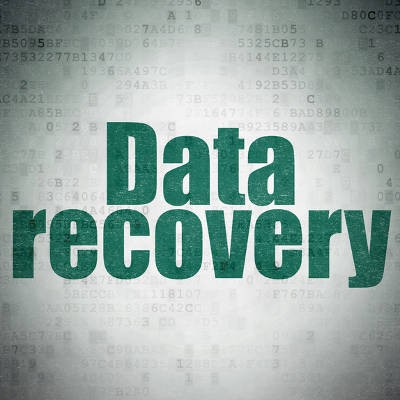Washington Works Blog
It’s imperative that your organization’s software is managed properly. If you can’t do this, then your operations can suffer in the long run. While this might sound like a lot of work, software management isn’t as difficult as it sounds if you break it down into compartmentalized tasks. Ultimately, you can group it into three major steps: leveraging available assets, testing strategies, and understanding the software.
The file cabinet. It may be a staple of the office, but boy can they be a pain in the neck. Every file needs to be printed and collated only to be filed in a dingy file cabinet with the off chance that it will ever be needed again. For businesses that have a lot of paper filed away, a document management system can go a long way toward modernizing your organization, and providing a access-controlled database where you can find any file in seconds.
Running a business sometimes requires attention to very minute details, and some things must be measured in order to achieve optimal efficiency. You’ve likely heard the terms bits and bytes used regarding data storage or transfer, but do you know what the difference is between them? Today’s tech term is dedicated to this explanation.
Many business transactions may be moving away from the telephone, but it is still a must-have for any business. Not everyone is Internet-savvy after all. Nowadays, there are plenty of telephone options out there, but only one carries no upfront hardware costs or a exorbitant fee structure: Hosted VoIP. Today, we will take a look at the benefits of cloud hosted VoIP, and how to get one working for your business today.
Normal. Usual. Typical. When your business is going well, it all feels “normal”. When you are faced with a major technology problem, however, it can trigger a series of catastrophic issues that interrupt, or in some cases destroy, the equilibrium reached when things are going as they should. This peace of mind is the main reason many businesses owners like you have chosen to sign a service level agreement (SLA) with an outsourced IT provider. Keeping everything “normal” can keep profit rolling in. Today we look behind the SLA to show you how it works to protect your business’ normal.
We often take for granted that people know what we are talking about when we talk about popular connectors, but really how do these systems work? For this week’s tech term, we are going to take a look at something we all have used and probably are actively using: the Universal Serial Bus (USB). We will take a look at the origins of this technology, the development of it, and how it is being used today.
Let’s face it--you waste countless hours on the phone dealing with vendors for all of your business needs. Whether it’s a new software solution or hardware component, you’ll have to go through someone to get it, whether it’s a big retailer like Amazon or your local Mom and Pop computer store but working with your vendors has several unforeseen costs that you might not even know exist.
Chromebooks are a pretty common device at this point, and this popularity only makes sense. For many, the Chromebook offers basic features that serve their purposes well, but there are those who wouldn’t be satisfied with their capabilities. This week, our Tech Term is Chromebook, so let’s take a closer look to gain a deeper understanding of them.
Compliance laws regarding the storage and dispersion of healthcare records were implemented with the intended purpose of urging healthcare providers to better take care of their patients’ personal information, but how effective are they? Unfortunately, there are many providers that have failed to meet the standards for the HIPAA and HITECH compliance laws, and it has brought a hefty price tag along with it.
Due to the constantly evolving nature of business technology, it can become difficult to protect every single portion of your network from becoming compromised in the event of a disaster scenario. This might make information technology in the business environment a liability, but the benefits that it provides are unquestionable. Therefore, you need to take measures to secure your network as needed.
Zero-day threats are some of the most dangerous ones out there. What we mean by “zero day” threats are those that have been discovered by hackers before an official patch has been released by the developers, giving them exactly zero days before they are actively exploited in the wild. One of the more dangerous zero-day threats out there at the moment is one that takes advantage of Internet Explorer.
Paper can be incredibly expensive, especially with the quantity that a normal business goes through every single day. However, not only is it expensive on the monetary side, but also on the environmental side as well. By making some changes around your office, you can be more eco-friendly and budget-friendly by reducing the amount of paper waste your organization suffers from.
Social media has been an emerging technology in recent years, and has produced many threats. Hackers have learned that they can take advantage of these communication mediums to launch dangerous new attacks on unsuspecting users. With enough ingenuity on a hacker’s part, they can potentially steal the identity of a social media user. Here are some of the best ways that your organization can combat identity theft through social media.
If there is one thing that you can always count on from your business’ technology, it’s that it will inevitably fail at some point in the future. Therefore, your business should have a plan to keep this from happening at all costs. It’s understandable that you would want to make sure that your needs are properly evaluated both now and in the future. To this end, a technology assessment is incredibly helpful.
The Internet of Things has been growing rapidly, and with this growth it has become a major part of daily life. There are connected devices you couldn’t even fathom being needed, but some have turned out to be exceeding useful. In 1977, the release of Star Wars saw people’s imaginations expand. The science end of the sci-fi went into overdrive, and soon communications and computing would change forever. Despite being a long time ago in a galaxy far, far away, the Star Wars universe introduced several concepts of the Internet of Things, decades before the IoT was even conceptualized. This week, we will take a look at the modern day Internet of Things, and how Star Wars primed us for our own future.
The Internet has become an irreplaceable part of many business’ operations, which brings the thought into question of how much you rely on it for your daily duties. Technology has changed the way that the Internet works for the better, but there is one part of its operations that still lies at the heart of it: bandwidth.
Data backup is one of the most critical parts of protecting your business, but there are a lot of moving parts that need to be considered before implementing a solution. For example, did you know that data backup and disaster recovery are two different things completely? While they may both be involved in the business continuity process, the two represent equally important, yet disparate, parts.
How often do you see smart technology in headlines? The term is thrown around a lot, and it’s because there are countless products circulating in both the consumer and business environments. These connected devices range from smart forks to smart cars, so you can imagine that there are a fair number of useful (as well as useless) applications of this technology. How has it changed in recent months, and what will smart technology look like in the future?




















